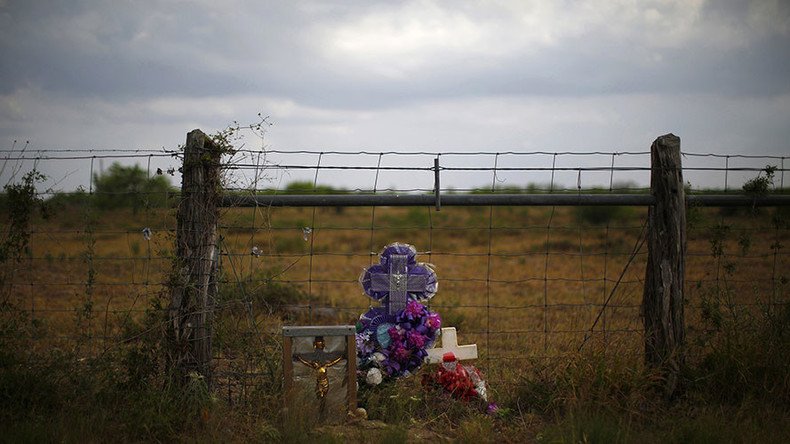Deaths along Arizona border uncounted by Border Patrol

Between 2014 and 2015, fewer migrant deaths occurred between the US and Mexico, according to the US Border Patrol. At face value, this may seem good. However, the numbers do not hold up to state reporting that finds the numbers growing.
Each year, thousands of migrants take a risk and cross the southwestern US border, navigating difficult terrain in extreme temperatures and often relying on unscrupulous human traffickers. It’s a danger difficult to calculate, particularly when there is a major discrepancy between the reported deaths from federal officials and Arizona state officials.
In 2014, federal officials reported that 110 people died crossing the border into Arizona. That same year, Arizona officials reported 127 deaths. While the federal numbers are based on the reports of Border Patrol, state officials base their reports on the numbers from the medical examiner’s office in Pima County, which counts the totals from the four counties that are on the US-Mexico border, the Los Angeles Times reported.
There’s a map for that: Google maps help illegal immigrants locate border checkpointshttps://t.co/J7HCCp1jMqpic.twitter.com/B3JkpNbyVY
— RT America (@RT_America) March 18, 2016
2014 was the first time federal and state numbers diverged, but not the last. In 2015, federal officials celebrated a decrease in migrant deaths when they reported finding 68 migrants dead. However, Pima County reported the opposite trend, with 143 deaths.
A part of the reason for the difference is in methodology. While Border Patrol only reports bodies recovered by agents working in the field, the Pima County medical examiner’s office counts everyone brought to the morgue and identified as migrants.
Another part of the issue could be the methods that Border Patrol uses when encountering migrants illegally entering the US. According to the Arizona-based migrant advocacy group No More Deaths, agents chasing border crossers can result in groups scattering into the desert.
No More Deaths’ report on deadly apprehension, titled “The Disappeared Report,” claimed to have documented 67 incidents of chase in remote areas. The issue with this is that Border Patrol agents may be more familiar and comfortable with the remote terrain and knowledgeable about cliffs and other environmental hazards. Therefore, if they do not deter people from running in those directions, tragedies can result.
José Cesario Aguilar Esparza died in March 2015 after he and his two nephews were chased by Border Patrol. His nephews were arrested and unable to see exactly what happened in the dark night, but they heard someone fall and scream. They would later learn that their uncle had fallen off of a cliff.
Other issues like exhaustion from chase, injuries and even drowning in areas along the various rivers all contribute to the death count from border crossings. According to the report, 42 percent of chases end with someone becoming lost and often disoriented.
One in three deported migrants robbed, separated from families by US border agents – report http://t.co/eM0HmiNYZ0pic.twitter.com/RfWaodnPrs
— RT America (@RT_America) September 22, 2015
Not all those who are lost in the desert die. The report cites one man who had dropped his water during a chase and spent four days living off of roots and plants until he reached civilization. Others claim they drank dirty water from cattle tanks in order to stay alive.
Others are not so lucky. In Mission, Texas, the fire chief reportedly pulled a body out of the Rio Grande every week for the first six months of 2015. Officials from Border Patrol told the Guardian that the human traffickers are to blame, saying, “Smugglers lie, telling their ‘customers’ their passage will be safe, but in reality, the terrain is treacherous and the conditions are extreme. Many are led to their deaths by smugglers more concerned about making money than they are about the lives of others.”
No More Deaths believes that these deaths are less of an issue with smugglers but rather the result of the 1994 “Prevention Through Deterrence” border patrol strategy that cut off urban points of entry and forced groups to navigate through the wilderness.
Regardless of where the problem lies, it continues to grow. In the first 11 months of 2016, federal officials reported finding the bodies of 287 migrants.












